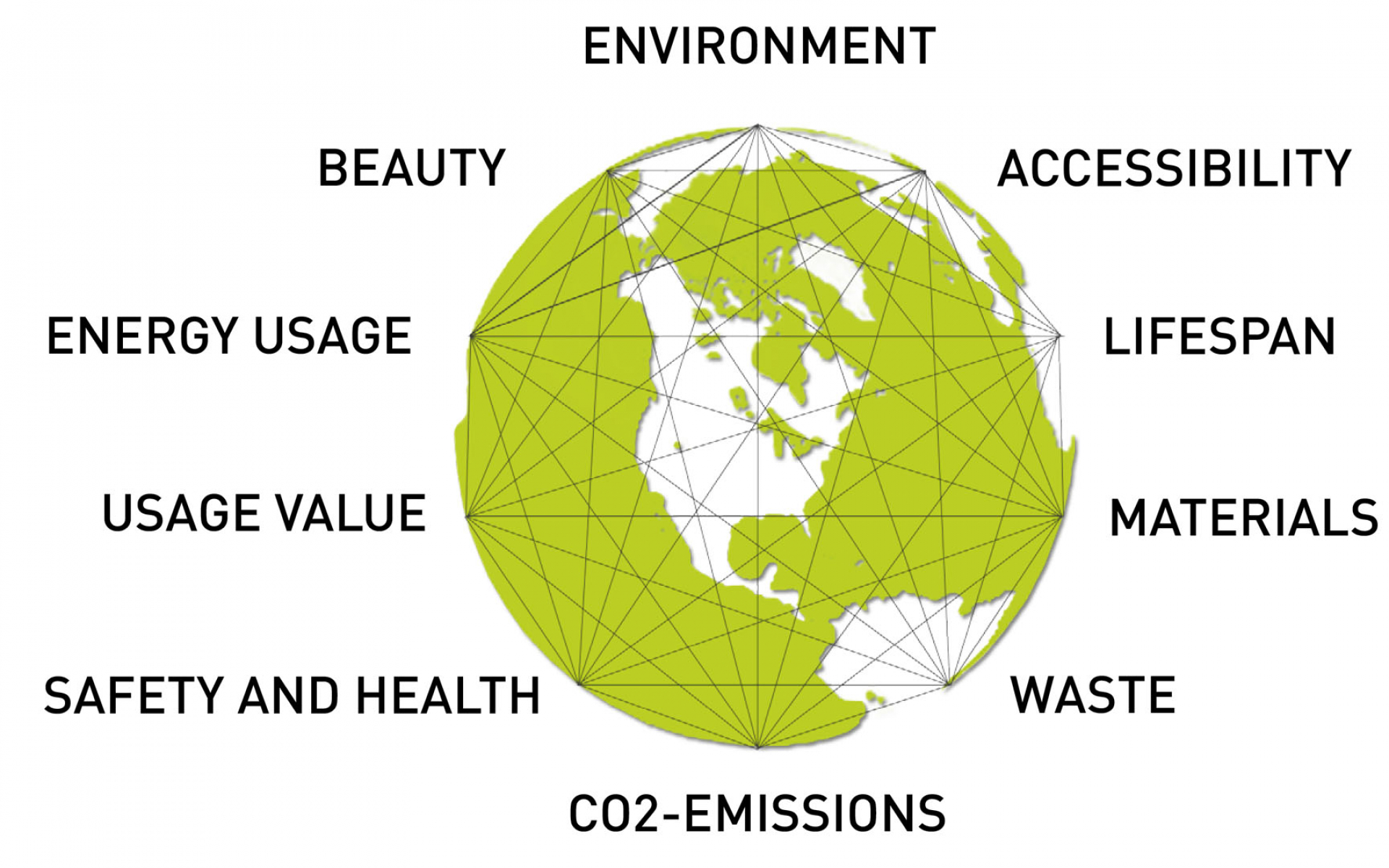SUSTAINABILITY

What is sustainable?
Sustainable. An often used word with a positive connotation. But in practice, there prove to be many different interpretations of such concepts as sustainable building, cost conscious design, and energy efficient construction.
The definition for ‘sustainable development’ of the 1987 UN Brundtland Commission is as follows: development that meets the need of the present without compromising the ability of future generations to meet their own needs. SEED architects tries to apply this definition in practice. This leads to ten aspects, which together determine the building’s sustainability.

Ten aspects determine sustainability
The total score on these ten aspects determines the degree of sustainability. Also, if one of these ten concepts is not or hardly considered, the building will not be sustainable and will be pulled down prematurely. In practice this might work out as follows: an extremely energy efficient building in a totally inaccessible environment is not sustainable. And a building, which gets high marks on all aspects, but is considered ugly will not stand for a long time. In our view the design process will have to be a broad exploration and these ten ‘reference points’ will make clear what considerations are to be made. As the diagram aims to illustrate, the various sustainability aspects should be well-balanced. The design is a combination of these ten aspects, but in one project a certain aspect will dominate, whereas in the next project a different aspect will be more important.

Environment
The location of the building often is a known fact. The site offers a number of qualities that can be fully exploited. In this way one can take advantage of an unique place and add value to it too. This not only makes the building more durable, but the surrounding area as well.

Accessibility
The accessibility of a built environment is of a great importance for its functioning. Generally speaking, an accessible building has greater value and is more durable. The situation near the highway makes the building very accessible. Another important point to increase the sustainability considerably is good accessibility by public transport. The busses will find their way easily. Also parking just near the building increased the accessibility of the building.

Lifetime
Through the realisation of a very well adaptable building, suitable for multiple functions, the service life of the building is initially extended. Function changes within the building are conceivable, but also a conversion of the building itself is imaginable. The lifetime of a building can largely be extended if a building is optimally adaptable and prepared of future changes.

Material use
A design aims to achieve sustainable use of materials as much as possible. This may cost less energy in production and transportation. Also, when the materials can be reused, they may require little maintenance and / or in the production do little or no damage to the environment.

Waste flows
The proper handling of waste (with the primary objective to avoid the generation of waste) is a subject the organisation will have to be aware of. Therefore the transportation lines for goods in the design are well thought out. It is possible to separate waste in more or less automated and integrated systems. One step higher on the sustainability ladder is to use own waste as fuel for future power generation.

CO2-emissions
Although the building is striving to reduce CO2 emissions as much as possible during the construction phase, the principal reduction must be achieved during the period of usage of the building. Many features to reduce energy use can be incorporated: an optimal insulation of the building, low temperature heating and high temperature cooling, sun blinds, energy recovery, daylight control of lighting, presence detection, etc. This will save a huge amount of CO2 emission because less fossil fuel is needed.

Safety / Health
A sustainable building is safe and healthy. It almost speaks for itself. In the design (both in outline and in detail) of the building safety for children, elderly people, people with mobility problems (for example people in wheelchairs) can already been taken into account.
A healthy building is a building with sufficient daylight and views, contact to the outside, nature around, in which materials does not cause unnecessary noise and without unhealthy materials, etc.

User value
The user value of a building design has priority. The entire design is built up using measures to achieve the highest possible usefulness of the building. Adaptability of the building can seamlessly accommodate the changing need for space of people in the building..

Energy flows
A design of a building is focused on sustainability and energy efficiency. A Building Management System ensures an actual monitoring, analyzes and manages the energy flows. Energy storage is a pretty good start of the way we use energy. A further investigation is desired to explore the local possibilities of efficient energy flows such as energy storage in the ground (geothermal storage) and the use of wind and solar energy.

Beauty
Every building should be able to be called ‘beautiful’. And beautiful it is, as it fits in its environment, as it fascinates and when it can be experienced. But also when attention has been paid to the detailing and the use of materials, when light can show a building in different ways, if the building has significance in its environment, and so on. But this is not timeless. Time will give us new definitions of ‘beautiful’. Therefore the building needs character to let the building be what it wants to be!


